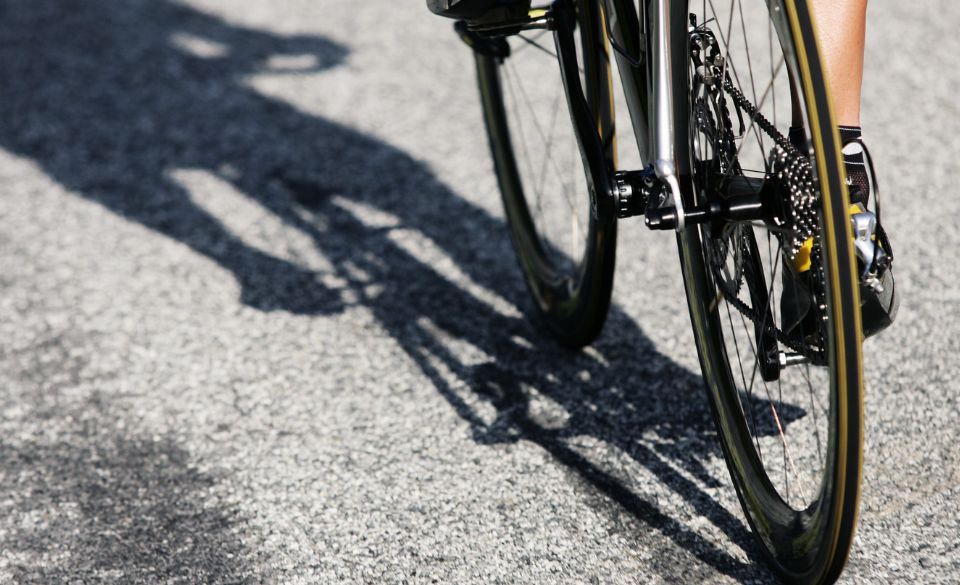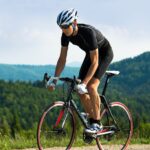
Optimal Cycling Cadence: Finding Your Pedal Sweet Spot
Page Contents
As a cyclist, you’ve probably heard the term “cadence” thrown around during training sessions and group rides. But what exactly is cadence, and why does it matter? Cadence refers to the number of pedal revolutions per minute (RPM), indicating how fast or slow you’re spinning the pedals. It’s a critical aspect of cycling performance, and finding your optimal cadence can make a world of difference in your riding experience. In this blog post, we’ll explore the importance of optimal cycling cadence, how to find your sweet spot, and the science-backed benefits that come with it.
Understanding Cadence: Why RPM Matters
Before we delve into the optimal cadence range, let’s understand why cadence matters. When you ride a bike, you can choose to pedal at various speeds. A low cadence means you’re pushing harder on the pedals, resulting in a slower RPM, while a high cadence involves spinning the pedals faster with less force. The balance between these two extremes lies in finding your optimal cadence, where you’re pedaling efficiently and comfortably.
The Optimal Range: Striking the Balance
Studies have shown that the optimal cycling cadence for most cyclists falls within the range of 80 to 100 RPM. Within this range, you’re likely to achieve a good balance between muscular efficiency and cardiovascular effectiveness. However, it’s essential to remember that everyone is unique, and what works for one rider may not be the ideal cadence for another.
Factors Influencing Your Cadence
Your optimal cadence can be influenced by various factors, including:
Terrain: When riding on flat terrain or descents, a higher cadence is often more efficient, allowing you to maintain speed with less fatigue. On the other hand, when tackling steep climbs, a lower cadence with more force may be necessary to generate power.
Fitness Level: Cyclists with higher fitness levels often have a more extensive range of comfortable cadences. With improved cardiovascular fitness and muscle strength, you may find it easier to pedal at a higher RPM.
Bike Setup: The gear ratio on your bike can also impact your cadence. Experimenting with different gear combinations can help you find the most comfortable and efficient cadence for various riding conditions.
Personal Preference: Ultimately, your optimal cadence may come down to personal preference. Some riders feel more powerful and in control at a lower RPM, while others thrive with a quicker leg turnover.
Benefits of Optimal Cadence
Finding your sweet spot and maintaining an optimal cadence during rides can lead to several benefits:
Reduced Fatigue: Pedaling at your ideal cadence reduces strain on your muscles, delaying fatigue and allowing you to ride longer and more comfortably.
Improved Efficiency: When you pedal within your optimal cadence range, you use energy more efficiently, making your rides more sustainable.
Joint and Muscle Health: Maintaining a balanced cadence puts less stress on your joints and muscles, reducing the risk of overuse injuries.
Enhanced Performance: Consistently riding at your optimal cadence can lead to better overall cycling performance, including increased speed and endurance.
Finding Your Optimal Cadence: A Trial and Error Process
Discovering your ideal cadence is a trial and error process. During your rides, experiment with different RPMs and pay attention to how your body responds. If you feel comfortable and efficient at a specific cadence, take note of it. Over time, you’ll develop a sense of your optimal cadence for various riding conditions.
Tips to Improve and Maintain Your Optimal Cadence
Now that you understand the significance of optimal cycling cadence, let’s explore some practical tips to improve and maintain it during your rides.
1. Cadence Drills
Incorporate cadence drills into your training routine to become more comfortable with different RPMs. During your warm-up or cooldown, focus on specific cadence ranges, such as spinning at 90 RPM for 2 minutes, followed by 70 RPM for another 2 minutes. These drills help your muscles adapt to different pedaling speeds and enhance your overall cadence range.
2. Use a Cadence Sensor
Invest in a cadence sensor for your bike if you don’t already have one. A cadence sensor attaches to your crankset or pedal and measures your RPM in real-time. It provides valuable feedback during your rides, helping you stay within your optimal range and make adjustments when needed.
3. Listen to Your Body
Pay attention to how your body feels at different cadences. If you’re grinding and straining during a climb, try shifting to a lower gear and increasing your cadence. On flat terrain, focus on spinning at a higher RPM to maintain momentum. Your body often knows what cadence feels best, so trust your instincts and find your rhythm.
4. Mix Up Your Training
Incorporate a variety of rides into your training plan, including endurance rides, interval sessions, and hill repeats. Different types of rides challenge your body in various ways and allow you to explore different cadences. Gradually, you’ll develop the versatility to adapt your cadence to different terrains and conditions.
5. Stay Relaxed and Smooth
Tension in your upper body can negatively impact your cadence and overall performance. Focus on staying relaxed and maintaining a smooth pedal stroke. Keep your grip on the handlebars light, and avoid unnecessary upper body movement. A relaxed posture allows you to channel all your energy into your pedal strokes efficiently.
6. Be Patient
Finding and maintaining your optimal cadence is a process that takes time and practice. Be patient with yourself as you experiment with different RPMs and adapt your pedaling technique. The more you ride and tune into your body, the more intuitive your cadence will become.
Cycling Cadence Training Plan Example
This comprehensive 6-week program example is designed to help you improve your pedaling efficiency, increase your cadence range, and find your optimal RPM rhythm. Whether you’re a beginner looking to build a solid foundation or an experienced cyclist aiming to fine-tune your cadence, this plan has got you covered.
Week 1-2: Building Cadence Awareness
In the first two weeks, our focus will be on building cadence awareness and getting comfortable with different RPMs. Each ride will include cadence drills to help you understand how your body responds to different pedal speeds.
Sample Weekly Schedule:
Day 1: 45-minute easy ride – Warm-up with 5 minutes at 80 RPM, then alternate between 3 minutes at 90 RPM and 3 minutes at 70 RPM for the remainder of the ride.
Day 2: Rest or active recovery (easy walk or short leisurely ride).
Day 3: 60-minute ride – Start at 85 RPM for 10 minutes, then gradually increase your cadence by 5 RPM every 5 minutes until you reach 105 RPM. Hold 105 RPM for 5 minutes, then reverse the process back to 85 RPM.
Day 4: Rest or active recovery.
Day 5: 30-minute ride – Perform 10-second sprints at maximum effort, followed by 50 seconds of easy spinning. Repeat for the entire duration of the ride.
Day 6: Rest or active recovery.
Day 7: 90-minute steady ride – Focus on maintaining a consistent cadence around 85-90 RPM throughout the ride.
Week 3-4: Increasing Cadence Range
During weeks 3 and 4, we’ll work on increasing your cadence range by introducing more interval sessions and hill repeats. These workouts will challenge your leg turnover and help you become more adaptable to different terrains.
Sample Weekly Schedule:
Day 1: 60-minute ride with cadence intervals – Alternate between 5 minutes at 80 RPM and 5 minutes at 100 RPM for the entire duration of the ride.
Day 2: Rest or active recovery.
Day 3: 75-minute ride with hill repeats – Find a moderate incline and focus on maintaining a cadence of 85-90 RPM while climbing. Repeat the hill climb 4-5 times.
Day 4: Rest or active recovery.
Day 5: 45-minute interval ride – Perform 3 sets of 1-minute sprints at maximum effort, separated by 5 minutes of easy spinning.
Day 6: Rest or active recovery.
Day 7: 2-hour steady ride – Experiment with different cadences throughout the ride, ranging from 80 RPM to 100 RPM.
Week 5-6: Fine-Tuning Your Cadence
In the final two weeks, we’ll fine-tune your cadence and focus on maintaining efficiency and smooth pedaling. You’ll have more freedom to explore different cadences and discover your sweet spot.
Sample Weekly Schedule:
Day 1: 90-minute ride with cadence variations – Alternate between 5 minutes at 85 RPM and 5 minutes at 95 RPM. Play with your cadence during the ride and find what feels most comfortable.
Day 2: Rest or active recovery.
Day 3: 60-minute interval ride – Perform 4 sets of 2-minute intervals at 100 RPM, followed by 2 minutes of easy spinning.
Day 4: Rest or active recovery.
Day 5: 45-minute hill repeats – Find a challenging climb and focus on maintaining a steady cadence of 85-90 RPM throughout each ascent.
Day 6: Rest or active recovery.
Day 7: 2-hour endurance ride – Aim for a consistent cadence of 90 RPM and enjoy the freedom to explore different terrains.
Remember that cadence is a dynamic aspect of cycling, and there’s no one-size-fits-all answer. Your optimal cadence may vary depending on terrain, fitness level, and personal preference. The key is to keep experimenting, stay mindful of your body’s feedback, and embrace the rhythm that works best for you.
Conclusion
Your optimal cycling cadence is a critical factor in unlocking your full potential as a cyclist. Balancing power, efficiency, and comfort through the right RPM can significantly impact your performance and enjoyment on the bike. Remember, there is no one-size-fits-all answer to cadence; it’s a personal journey of discovery and adaptation.
As you continue your cycling adventures, pay attention to how different cadences feel, and trust yourself to find the sweet spot that works best for you. Whether you’re spinning at 90 RPM on a flat road or pushing through a steep climb at 70 RPM, what matters most is that you’re in tune with your body and making the most of every pedal stroke.



